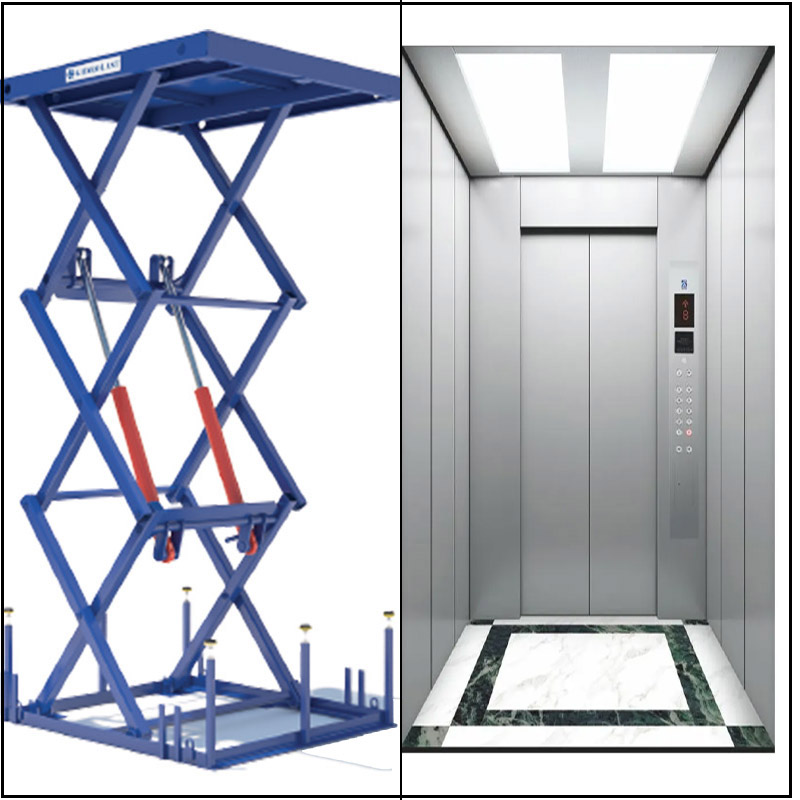Hydraulic Lift
Hydraulic lifts are a type of lift system that use hydraulic fluid to raise and lower the platform. They are commonly used in various applications such as passenger elevators, goods lifts, automotive lifts, and scissor lifts. Hydraulic lifts are known for their smooth and powerful lifting capabilities, making them ideal for both commercial and industrial use. Hydraulic lifts are workhorses in many industries, utilizing the principles of hydraulics to raise and lower platforms for efficient movement of people or materials.
These lifts operate based on Pascal's Law, which states that pressure applied to a confined incompressible fluid is transmitted equally throughout the fluid in all directions. In simpler terms, applying force to a small area of hydraulic fluid creates a magnified force on a larger area. A typical hydraulic lift system consists of a reservoir holding hydraulic fluid, a pump that pressurizes the fluid, a cylinder containing a piston, and valves controlling the fluid flow. As the pump pushes oil into the cylinder, the piston extends, lifting the platform connected to it. Releasing the pressure or diverting the flow lowers the platform.
Benefits of Hydraulic Lifts:
-
Versatility: Their diverse range of designs makes hydraulic lifts suitable for various applications, from passenger transport in scissor lifts to heavy-duty cargo movement in goods lifts.
-
Smooth Operation: The hydraulic mechanism provides a smooth and controlled lifting motion, crucial for precise positioning of loads or ensuring passenger comfort.
-
High Weight Capacity: Hydraulic systems can generate tremendous force, allowing hydraulic lifts to handle significant weights, making them ideal for industrial settings.
-
Durability: These lifts are built to endure demanding environments and frequent use.








